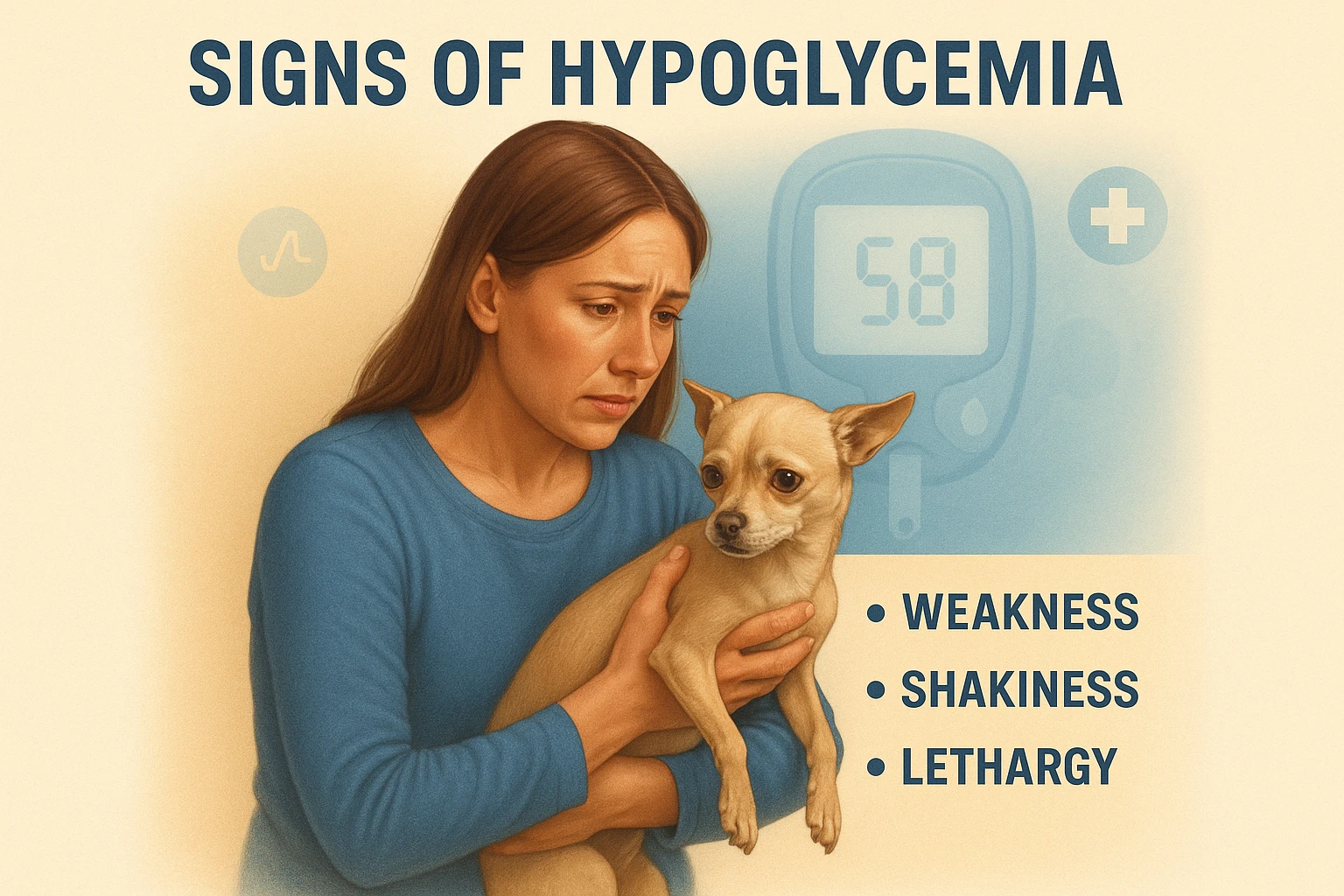Recognize Canine Hypoglycemia Symptoms Early
Introduction
Ever noticed your fluffy companion acting out of sorts? It might be more than a “ruff” day. Canine hypoglycemia symptoms can sneak up when you least expect it, posing serious health risks if not caught early. Let me put on my science hat for a sec—the lowdown is, knowing the signs can be lifesaving. Let’s delve into this essential guide to keep your tail-wagger bouncing and full of beans.
Key Takeaways
- Lethargy is a significant symptom of hypoglycemia.
- Tremors indicate potential low blood sugar.
- Immediate treatment is essential.
- Consult your veterinarian for a thorough diagnosis.
Table of Contents
Symptoms of Canine Hypoglycemia
Recognizing the red flags is half the battle. Picture this: a listless pup that just won’t get “pawsitive.” Common signs include lethargy, tremors, confusion, and even seizures. Here’s the delicious twist—by catching these symptoms early, you’re already halfway to a solution.
- Studies highlight seizure risk if untreated.
- Confusion can be mistaken for normal behavior changes.
- Severe cases may lead to coma if not addressed swiftly.
Veterinary Treatment
Here’s what the research actually shows—immediate glucose treatment is not just a sweet idea but a critical intervention. Whether your doggo has gobbled too much or too little, veterinary care is non-negotiable for effective management. But wait, the science serves up a surprising side dish.
- Expert advice stresses on giving quick glucose boosts.
- Your vet may recommend monitoring blood sugar at home.
- Underlying causes must be addressed to prevent recurrence.
Case Studies
Let’s stir the pot with some hard-hitting facts—case studies reveal peculiar yet insightful solutions. Fasten your seatbelts, we’re diving into success stories with interventions like surgical tumor removal. Even rarer culinary metaphors can’t top the relief when symptoms vanish after treatment.
- A Shih Tzu’s insulinoma treatment success highlights surgical efficacy.
- Nephroblastoma in Brittany Spaniels was tied to hypoglycemia.
- Surgery can resolve life-threatening blood sugar issues.
Managing Hypoglycemia
And now, for a dash of nutritional clarity—it’s not just about treating symptoms but embracing an all-encompassing management plan. Karo syrup can be a temporary fix while you seek professional care. Here’s the scoop: stabilizing sugar levels long-term is both an art and science.
- Use Karo syrup for immediate stabilization.
- Long-term dietary adjustments are often essential.
- Regular check-ups with vets to monitor progress.
FAQs
What are initial symptoms of canine hypoglycemia?
Lethargy and tremors are common early signs.
Should I use glucose plants for my dog at home?
While temporary glucose boosts are handy, consult your vet for comprehensive care.
How can I prevent hypoglycemia in my dog?
A balanced diet tailored to your dog’s needs is crucial; regular vet check-ups also help.
Conclusion
Picture this: your dog thriving because you’ve got the inside scoop on managing canine hypoglycemia symptoms. We’ve sliced through the hype, revealing that recognizing these symptoms early can literally save lives. It’s about more than just pawrenting—consider it a holistic devotion to keeping your pooch’s tail wagging. Remember, a bit of sugar-coated vigilance now ensures many energetic antics at the dog park later. Your doggo’s health is in your capable hands!


Leave a Reply